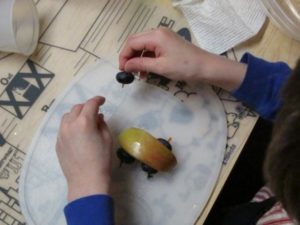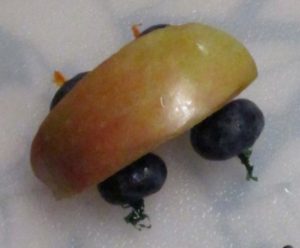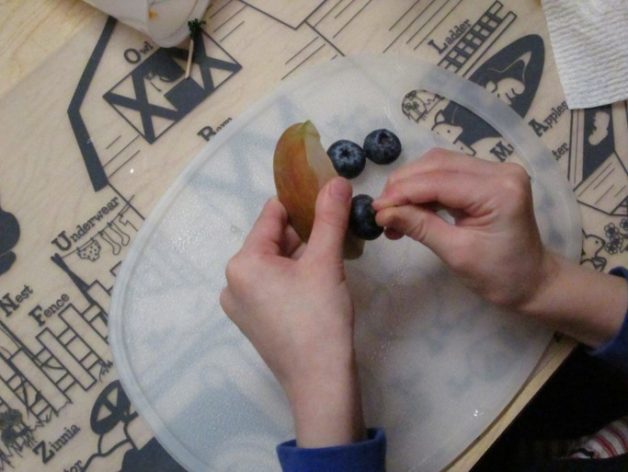(Try dressing, eating, or washing up without them)
Most of the children I have treated over the years who have had coordination deficits generally tended to have difficulty using hand and finger motions as well. These difficulties often caused problems with daily living activities such as dressing, manipulating clothing fasteners (buttons, zippers, shoe laces, etc.), using utensils, grooming and hygiene.
Planning developmentally appropriate projects that addressed these issues was a challenge for me. Teaching fingertip prehension patterns was often tedious because the children were often not motivated or interested in paying attention to how their fingers worked. However, when food crafts were introduced, I noticed that their eyes become more attentive to the task and sustained visual engagement began to emerge.
I selected frilled picks for this activity specifically because the tactile feedback from the frill made it easier for the children to process the sensory input.
I really enjoyed watching the children pick up the apple slice with one hand and turn the hand over to poke the blueberry “wheel” into place. These hand turning skills that could not be easily taught, were inherently evolving through use of food craft activities.

Visuospatial components were easily able to be addressed by simply asking “Where do the wheels go?”

Attention to force, direction, and timing of moves are an integral part of efficiency in motor schemes. Use of food crafts can be an aid in developing these components.


Comments are closed.